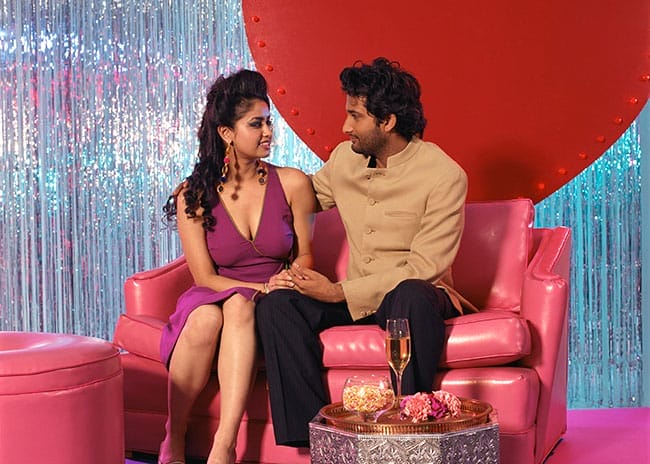
Is selling software at the enterprise level like this …
I want to begin by acknowledging that I am not a salesperson. It is not my responsibility to generate leads or sign clients, and I don’t get paid on the basis of commission. However, I have run the analytics team for two companies where analytics is the main value proposition. That has put me on the front lines and has allowed me to participate in hundreds of sales calls and to deliver more demos than I care to admit. As a result, I’m in the fortunate position of being able to get a sense of the cadence of those calls and a feel for the entire sales process from lead generation to closing.
What I’ve learned from those years of experience is that the closest analogy for selling software is dating. The dating analogy has applied to countless situations with prospective clients over the course of my five-plus years selling software. For example, I remember a client several years ago where we had engaged in an extended pilot (which felt like dating over the span of several months), but then we quoted them a price for full deployment and they balked (like suggesting that we stay in and watch sports every weekend). In the course of negotiations, they actually suggested that they start to look at other vendors (not unlike suggesting that we date other people). In the end, we were able to compromise on a price that made sense for both parties and were able to enter into an exclusive relationship.
In broader terms, let me break down the distinct sales stages that closely resemble the courting process.

… or more like this?
Lead generation: This is where you have to cast a wide net. When you’re selling software, you’re presenting at conferences, running webinars, cold-calling prospects and doing anything you can to get them into the funnel. When you’re dating, you’re reaching out via online dating sites, asking your friends to introduce you to their friends and even approaching people in public places if you’re brazen enough.
Qualification: This is where you find out whether there’s some initial interest, but you need to quickly see if prospects meet certain standards. When you’re selling software, you ask some very basic questions to find out if they’re the right size, if they have the budget, and if they have the right infrastructure and data in place. When you’re dating, you’re exchanging messages online, texting or talking briefly when you first meet to get a sense of whether there’s some possibility there. In both scenarios, this stage is pretty quick.
Demonstration and Validation: The first call, demo and date are where you start to invest more time and see if there’s a potential fit on both sides. When you’re selling software, you’re showing the product, answering questions, getting to know the buyers and determining whether your product suits their needs. When you’re dating, you go on a first date to vet each other and see if you have some mutual compatibility. Do you like to do the same things for fun? Do you have a shared sense of humor? Are you dog or cat people? The parties are starting to warm up to each other.
More calls, demos and dates establish that there’s some initial interest and attraction, but now we’re going to spend even more time together to see if there’s something more. In selling software, you’ll have to talk to others on the team and impress them too. In dating, you’ll have to meet your new love interest’s friends so they can get a read on you as well. In both scenarios, we start to sketch out some of the details around what a long-term partnership would look like and what both parties need to be happy, although it’s usually clear to both that there’s the possibility that the other may still also be talking to others.
Contracting: This is the point where it’s usually clear to both parties that there’s interest in being in an exclusive relationship. However, there are small details that might have to be worked out, and it’s possible at any point that things could fall apart. We get into the nitty-gritty details, and there are often compromises around pricing, timing and scope of deployment. In dating, there are similar questions that need to be answered. Can she live with the fact that he leaves the toilet seat up? Is he OK with the fact that she insists on having a dozen pillows on her bed? This is the last step before entering into an exclusive relationship, and it’s a critical one.
Closing: Exclusivity is where you’ve finally agreed to the other party’s terms and conditions, and have landed in an exclusive arrangement. This isn’t the end of the battle in sales, nor in dating. You need to continue showing the other why he or she decided to be with you, and there are inevitably going to be disagreements along the way. But the hope is that the relationship benefits both parties enough to continue staying together over the long haul.
Unfortunately, there aren’t any tricks to selling software, and there aren’t any ways to trick your partner into a relationship. In both scenarios, the “purchase” is a more emotional decision than a logical one that depends on offering the other party whatever it is that they’re looking for. But it’s thrilling to encounter a new client prospect or mate, and I’ve learned from my experiences, both as a boyfriend who is now in a very happy and fulfilling long-term relationship and as the chief analytics officer of a large company that builds talent management software and has hundreds of satisfied clients.
OK, maybe the analogy isn’t 100 percent applicable.

























